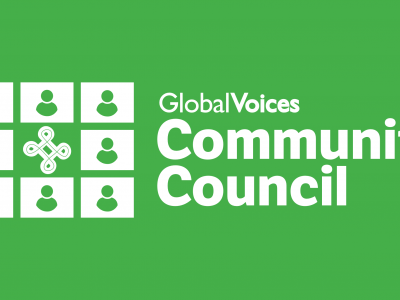
What's next?
This was originally published on Medium. If you like it and are a member, I would appreciate a clap. Thanks!
How Can Global Voices Use Personas to Move Forward?
Global Voices is asking its community to engage in defining its future path. Are we a community? Are we news? Are we media? All of the three? Something we have not yet imagined? The community council brings together a range of people with deep roots in Global Voices, including some of the founding members. It also brings together more recent members, without in-depth knowledge of the organization’s history and mission.
One way to look at the future, may be to employ design practices pioneered by Alan Cooper and the interaction design team (UX, Human Centered Design, whatever you call the discipline today) at Cooper Interaction Design. Those practices bring together research, communication, persona development, and design. As an early member of the Cooper team, I saw how powerful and prescient the process was. I have done my best to employ the process in communication work since then.
tldr:
No one can design for everyone. Specificity is what makes a product or service appealing. Taking time for research and persona development can ensure that what you want to offer is specific enough to be interesting. This article discusses the process further.
Personas bring the mission to life
The pressing questions facing Global Voices are what and who. What will we be in ten years and who are we trying to reach? What can we do best and who are we?
Developing personas can help answer these questions.
Personas are fictional characters that represent segments of the target audience. They help to better communicate an understanding of the audience. Personas are not averages, but archetypes. There is just enough detail in persona descriptions to make them seem like real people, but not so much that they are quirky.
Even when working in a new domain, it is possible to develop a deep understanding of the people involved by combining research and persona development. I’ve seen this time and time again. I’ve worked on projects with audiences as specific as chemical buyers for the paint and coatings industry to as wide as people who use online photo services. In each case, the clients were surprised by the depth of knowledge of their audience that the personas revealed.

What can the success of rollaway suitcases teach us about design?
What do Rollaway Suitcases, a Moby Song, and Denim Jeans have in Common?
Hint: they were all created with someone in mind.
Understanding the target audience well and specific people who make up that audience produces surprisingly effective results. This is repeated time and again. For instance, roll-away suitcases were designed specifically for flight crews, but it turns out that we all can use them. Denim jeans were designed for gold prospectors, but that does not stop us from wearing them. Moby writes songs with one specific person in mind, and his music is among some of the highest selling music of all time.
Here is what Moby had to say about his process in the March 17, 2002 issue of the NYT magazine:
“It’s weird, maybe, but every song I write, I imagine this specific kind of person who is listening to it alone, always alone, sitting by himself or herself,’’ he said. ‘’I have written a song where I imagine it’s being listened to by a woman who’s just come home from a hard day’s work and finally has a moment to herself. I’ve written a song where it’s a student in Germany on a train, coming home from school for the holidays.’’
Knowing who will eventually use the product being designed whether it is a website, a software application, a song, or a physical product keeps teams focused and productive. A clear understanding of the target audience helps to build consensus quickly.
So how do we start?
Start with Empathy and Understanding
Frankly, not everyone is cut out to develop personas. Here are some characteristics that could lead to creating good personas:
- Listening without judgment
- A love for fiction and reading
- Experience writing fictional characters or actual biographies
- Multi-generational life experience
- An ability to set aside your own personality to understand others
- Curiosity
Continue with Research

Walker with add-ons
One of my favorite design research stories illustrates that people often cannot verbalize what they need. A product development company asked people with limited mobility how their walkers could be improved. No one had any ideas. Yet, nearly all of them had made modifications to their own walkers:
Yet when the group members were excused and got up to leave, the researchers saw that several participants had rigged home-made carrying pouches to their walkers, ranging from a bicycle basket tied with shoe strings to an automotive cupholder. A good researcher lets the information tell a story instead of imposing a story on the information. This is a key difference and not as simple or as clear cut as it sounds. (From: When sparks fly: Igniting creativity in groups)
Although most of us won’t ever be as good at observation as Sherlock Holmes, there are things we can do to improve our research skills. This includes reading, interviewing, and observing.Research with design in mind means combining skepticism and innocence. It demands listening to what people do and do not say.
Ask Yourself these Questions
Working with a partner and sharing observations can make the process go even faster. At the end of every day spent on research answer the following questions together:
- What recommendations would we make based on what we learned today?
- What do we need to know more about?
- What questions can we ask that will help us discover more?
- What’s missing?
Look for Patterns and Outliers

Patterns, patterns, everywhere
Researching for design can use traditional methods of narrative research, surveys, observation, and literature reviews. In the analysis it’s important to look for patterns and for the outliers that break the patterns. Outliers are particularly important when it comes to design. They can show the way forward.
Patterns are part of everything we do and build. When we do research, we look for similarities in what we hear, observe, and read. We ask ourselves what is connected to what?
Codes are a way of visualizing the patterns and turning patterns into statistics. This requires an initial identification of the patterns and then naming these patterns. The coding process requires at least 2 people. It requires several reviews of the material to be sure you have the fewest named codes necessary to describe the patterns without ignoring anything.
When something doesn’t fit a pattern, it may be an outlier. Outliers fall far outside of the statistical norm. For design, outliers can be more important than the norm.
For more information on research practices for design, please read: Extracting Meaning from Research.
Create a Mental Model

Where do the strings go?
Have you seen the elaborate models some fictional detectives use to visualize and put together evidence? Images, articles, strings crossing from wall to wall and picture to picture? I love those.
When you are doing research for personas, it’s useful to learn to do this inside your own head. Ask yourself how the research is helping you understand the people and imagine the future. How is it helping you re-imagine the end product? This is very important and very difficult.
You can practice your mental modeling skills by imagining something you know very well. Take it apart and put it together using your brain alone. Practice as much as you can!
Tip: The science fiction writer and mathematician Rudy Rucker has all sorts of stories of using mental models/imagination to imagine four-dimensional spaces. His book, The Fourth Dimension, is online for free.
Turn all this into a persona

Who are your personas?
Write a persona like a character. Think about these things when making your sketch:
- Demographic info: i.e., gender, age, nationality, education, etc
- What characteristics are salient for the particular project? For instance what about this persona is interesting for Global Voices to know?
- What does the persona hope to achieve?
- How does Global Voices help the persona?
- Why would the persona interact (or not) with Global Voices?
- What does this persona want to do with the interaction?
- A picture and a name: these are helpful.
When I worked at Cooper Interaction Design, we employed a method called Goal-Directed Design. Essentially, each persona had a set of goals. We would design for one persona with one set of goals. When the goals of the personas differed, we knew that different designs were necessary. This is a very powerful tool.
Let me give an example from a project I worked on for a new pharmaceutical. From our research, we knew that people with chronic diseases would become as expert — or even more expert — than trained healthcare professionals. They learned the language. They read the research. Their goals were the same as healthcare professionals. As a result, they would seek out the same information. There was no need to create two sites with two different sets of information for caregivers and people with chronic diseases. One was enough. On the other hand, people newly diagnosed and those caring for them (family/friends) needed a completely different interaction with different information.
Don’t Forget to Share

Make sure to share personas with the team
It’s not enough to go through the motions of creating personas. The personas won’t work if the logic for creating them is not communicated to the team. They won’t work if their descriptions are not shared with and embraced by the team.
In the best cases, the team has a poster of the personas pinned to the wall by their desk. They are continually reminded of who they are creating content for, who they are designing for, and why they are doing it.
Many might feel uncomfortable and awkward using personas at first.Some may resist the use of personas completely. But if people can make a small effort, a tiny leap of faith, then personas can be a great tool. They streamline conversations and focus ideas. Using them gives diverse teams common ground.
In conclusion, don’t just develop personas, use them and share them.
Ask me questions about anything unclear.
I’d love to hear from you.
Resources:
Egherman, T., & Anderson, G. (2018, March 21). Extracting Meaning From Research. Retrieved from https://medium.com/@etori/extracting-meaning-from-research-1cb4304d22b7
Kraus, C. (n.d.). Inside Goal-Directed Design: A Two-Part Conversation With Alan Cooper. Retrieved from https://www.cooper.com/journal/2014/04/inside-goal-directed-design-a-two-part-conversation-with-alan-cooper
Leonard, D. A., & Swap, W. C. (2005). When sparks fly: Igniting creativity in groups. Boston, Mass: Harvard Business School Press.
Marzorati, G. (2002, March 17). All by Himself. Retrieved from https://www.nytimes.com/2002/03/17/magazine/all-by-himself.html
Rucker, R. (n.d.). The Fourth Dimension. Retrieved from http://www.rudyrucker.com/thefourthdimension/


